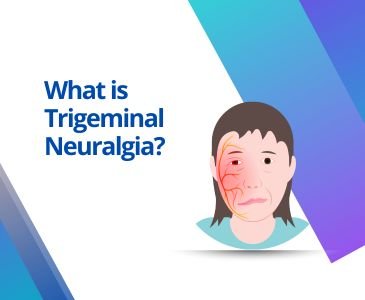What is Trigeminal Neuralgia Disease?
Trigeminal neuralgia is a condition that affects the trigeminal nerve, which is responsible for feeling in your face. When this nerve gets irritated or compressed, it sends out pain signals, even when there is no real cause for pain.
Understanding Trigeminal Neuralgia:
Imagine feeling a sudden, electric shock-like pain on your face just because you brushed your teeth, smiled, or even felt a gentle breeze. That’s what people with trigeminal neuralgia experience. This condition causes intense facial pain. But don’t worry—there are ways to manage and treat it.
What Does the Pain Feel Like?
People with trigeminal neuralgia describe the pain as:
- Sharp, stabbing, or electric-shock-like
- Lasting for a few seconds to a couple of minutes
- Triggered by simple activities like talking, eating, brushing teeth, or touching the face
- Usually on one side of the face (rarely affects both sides)
- Over time, episodes can become more frequent and last longer
What Causes Trigeminal Neuralgia?
The most common cause is pressure on the trigeminal nerve, usually from a nearby blood vessel. Other causes include:
- Aging-related changes in the brain
- Multiple sclerosis (MS) affecting nerve coverings
- Tumors pressing on the nerve (rare)
- Facial injury or surgery damaging the nerve
How is Trigeminal Neuralgia Treated?
Luckily, Trigeminal Neuralgiais treatable, and there are several options to help relieve pain.
1. Medications (First Line of Treatment)
Doctors often start with medicines that calm the overactive nerve signals.
2. Lifestyle Adjustments
Some people find relief by making small changes, such as:
- Avoiding trigger foods (very hot, cold, or spicy foods)
- Using a soft toothbrush and lukewarm water for oral care
- Managing stress with meditation, yoga, or acupuncture
3. Medical Procedures for Severe Cases
If medications don’t work, doctors may recommend procedures to block or reduce nerve pain:
- Microvascular Decompression (MVD): A surgery to move away the blood vessel pressing on the nerve
- Radiofrequency Ablation (RFA): Uses heat to disrupt pain signals from the nerve
- Gamma Knife Radiosurgery: A targeted radiation treatment to ease pain
- Balloon Compression or Glycerol Injection: Minimally invasive techniques that can relieve pain
When to See a Doctor?
If you’re experiencing persistent facial pain, consult a neurosurgeon for a personalized treatment plan. Early diagnosis and intervention can help manage symptoms effectively. Trigeminal neuralgia can be overwhelming, but with the right treatment and lifestyle adjustments, many people regain control over their lives.















